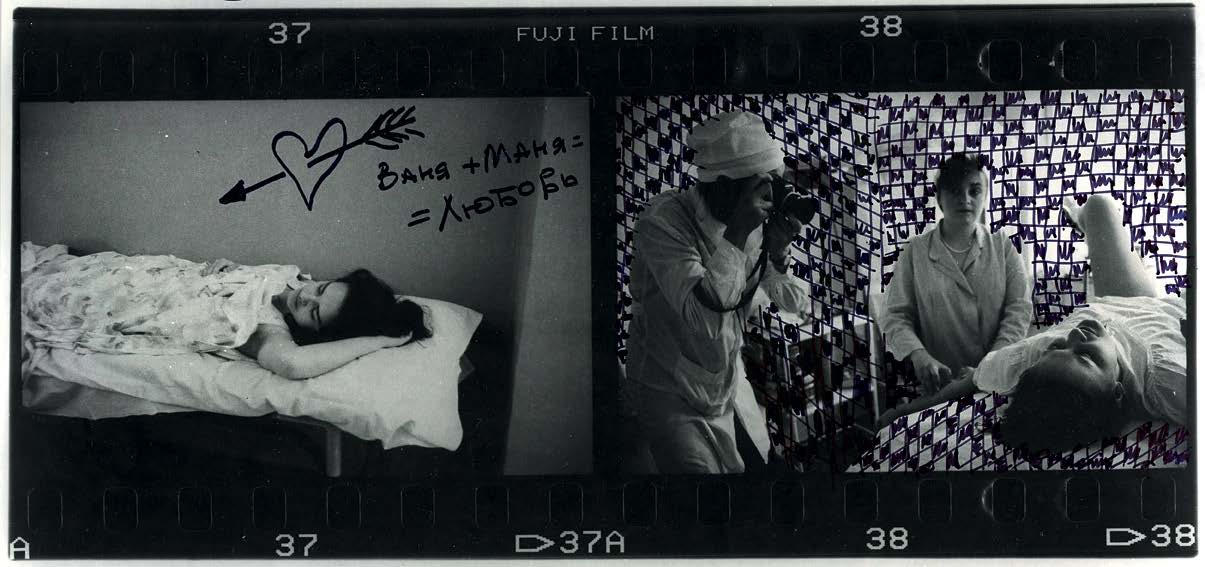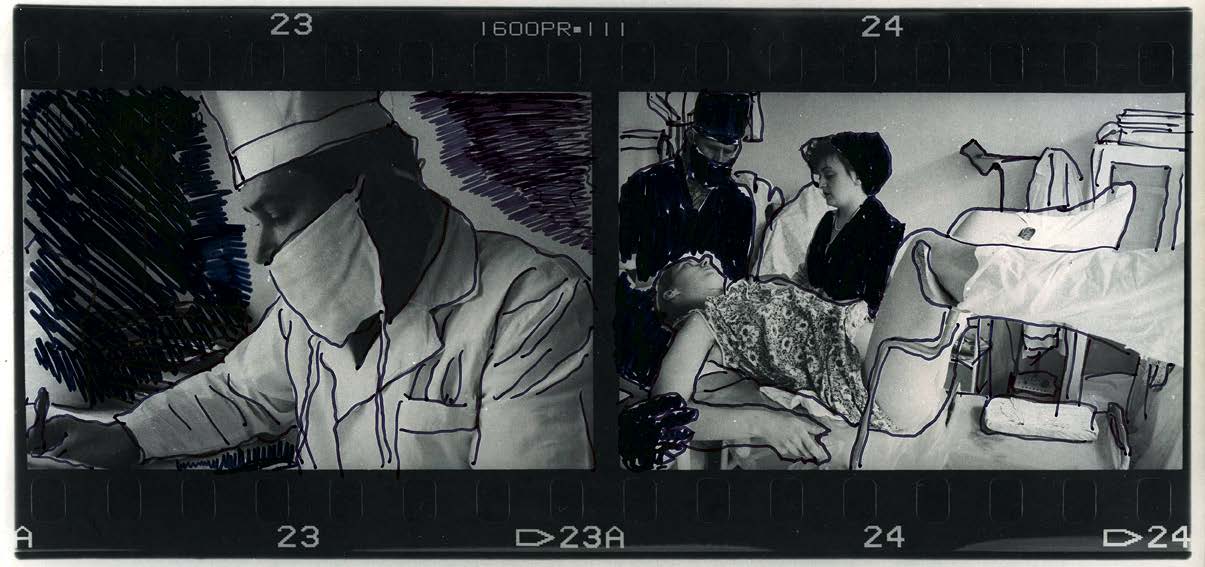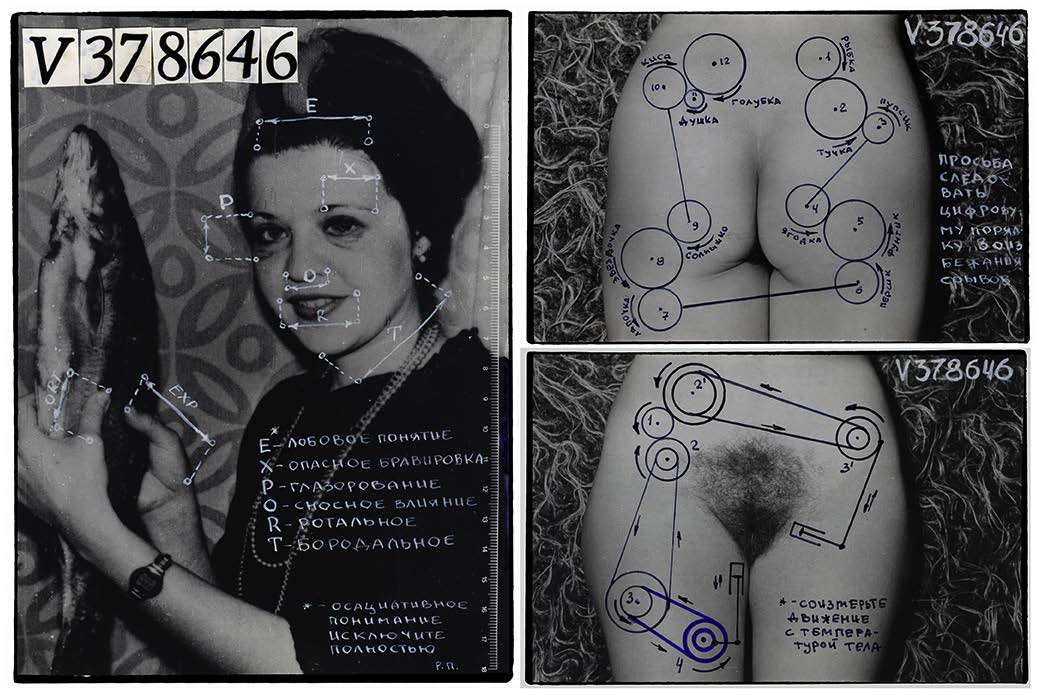Roman Pyatkovka
interviewed by Alexandra Nabieva
In the Enlightenment Era, a considerable influence on present-day reality, European thought imagined the body as an orderly, structured biological machine. The concept of the body has since undergone cardinal changes, even to the point of conceptualizing it as hollow, its surface coated with skin (“body without organs”). In art, the body also represented the reference point of harmony, the incarnation of aesthetic canons, and the hypersensitive body of suffering. However, one thing has not changed in the arts for many centuries – the objectification of the nude female body.
Noted Ukrainian photographer Roman Pyatkovka, co-curator of the association of Ukrainian Photographic Alternative (УФА), nominee of the Sony World Photography Award 2013 for “conceptual photography”, has experimented with visual language, using various devices: collage, multiple exposure – superimposition, manipulation with the surface of the image. I spoke to the artist about his earlier projects – the series Schemes (Схемы, 1999) and Abortion (Aборт, 2008), where he uses graphic elements in conjunction with the photographic representation of the female body.
If the graphics of Schemes is orderly and even ironic in some ways, the violent slashes of the Abortion series give the impression of an impassioned gesture. The field lines, dark areas and a finely traced, monotonous drawing covering a dark and gloomy background indicate where attention is focused. Barthes regarded the punctum as a sort of stab, an incision preceding the symbolic order and penetrating to the very core of meanings and words. The graphic elements superimposed on the surface of the series in fact look as though the personal punctum of the artist (and punctum is always individual) was so unbearable, that he tried to inscribe it within an elaborately structured symbolic order – an order allowing for the articulation of pain.
You are renowned as a representative of the Kharkov school of photography. Where should one look for the roots of this phenomenon of the post-Soviet territory?
I think it is due to a confluence of a number of circumstances. At the time when the Kharkov school of photography emerged, the city was divided between two poles: the students and the working class, which created an intellectual tension. In addition, Kharkov had a large intelligentsia, which was for a number of reasons unable to express itself. There was a hunger for the “contemporary” as we saw it. Slowly, new things started to emerge as a sort of alternative to the official culture.
You mostly photograph the nude body. In the Soviet Union, erotic photography could be seen as an escape from the asexual body of official propaganda towards a body of pleasure, incarcerated in the cramped housing projects known as “Khrushchevkas”. In what ways do you think the attitude towards the naked body changed throughout this whole period – from the Soviet era until the present day?
In my youth, the naked body did not exist in cinema or photography. When eventually there appeared the odd magazine – naturally not pornography – but simply ones occasionally showing a piece of a skin, this was a big deal. Whole generations were raised on this deficit. In an environment where this was such as strong taboo, our generation developed a tendency towards hypersexuality. When the Iron Curtain collapsed, a massive amount of nudity appeared, and even more came flooding in from the West. But it became evident that we look at the body differently. I remember when the exhibition of nudes (“ню”) opened in the early years of the Perestroika – a rather bland, schmaltzy glamour affair – people qeued to get in. But subsequently nudity became exploited for commercial purposes and it turned into a cliché, kitsch. You can see that today, too. But of course today the naked body creates no sensation.
You work in series. How do you know that a series is finished and nothing can be added to it?
As a rule I work for a long time and finish it entirely intuitively. Some series take many years. Games of the Libido (Игры либидо), for example, were interminable. At the moment, I am working on a series that should be consummated in a book titled Weather Forecast (Mетеопрогноз), but I just cannot stop, simply because I enjoy this work. As a rule, when I realize that I have exhausted all the variants of the series, I stop and select the best.
You prefer the genre of the erotic. Where does the Abortion series come from, after all is very remote from eroticism?
This was rather a coincidence. Back in the Soviet Era, I made a series of Maternity Hospital (Роддом), followed by a related project – a book titled You Wait, also about giving birth. Many years later I visited the same hospital and found it frozen in time: the same paint on those walls, gray sheets, gray cloaks, the same disgruntled, rough and uncaring doctors.
Is this the story of several random women, or did you select them according to some criteria, were you in contact with them?
No, they are random people. What happened was that a Dutch friend and student of mine arrived. He knew that I had done a project in a maternity hospital and asked me if he could also photograph in a hospital. I took him to the same place. We photographed together, I can’t remember what he did, what I did was this series.
What were the responses to your presence there?
They were under anesthetic, so they didn’t care, they were fine.
What was the reaction of your closest friends and colleagues? Were there critical voices?
Many categorically condemned it because of the naturalist shot. Others were categorically critical of the subject matter. Others yet condemned the fact that the work was printed on old expired photopaper. Some were offended by the inscriptions and the graphic elements I added to the photographs. I explained that this was not reportage, but a subjective view of the situation. I never was a documentarist, all I ever was about were my emotions, thoughts and impressions.
How do you feel about the fact that every now and then there appear initiatives to ban abortions – the government and other structures strive to control the human body, and the female body in particular?
The interests of the government and people’s individual interests were always at odds. It’s hard for me to articulate my opinion. On the one hand, as a modern man I understand that there are situations when this becomes necessary, but on the other hand, as a religious person I understand that this is not right.
When did you make the drawings on Abortion and Schemes series – immediately after printing the photographs, or with some interval of time? Is it a premeditated gesture or rather a response to the result – seeing your work and intervening in it?
First I took the pictures thinking about the results I wanted to get. I actually really like to interfere with the image – whether by brush or marker. The Schemes series was about a parallel between two phenomena: man’s striving towards two utopian ideals – the ideal body and the ideal machine – the perpetuum mobile. But then of course it is an ironic series.
In the annotation to Schemes you write about a polemic between the aesthetic and the conceptual. Do you think of these categories in opposition to one another, that is, the conceptual must necessarily be “ugly”?
No. You see, there is a classical aesthetic, which is more conservative. Conceptual art for me is a text. Everywhere where you have text, I mean in the visual field of representation. Aesthetic is a fluid notion in my opinion, it is not fixed or frozen. It transforms itself just like our understanding, contexts, methods, forms. The situation is in constant flux.
Aesthetics is also a peculiar form of influencing people, it is a category of perception. Do you think it is possible to predict the impression, the influence the work is going to create while making it? Or is that something you don’t think about at all?
Naturally I think about it, but I never strive for it, not lately, in any case. At present, the main criterion for me is whether I like it or not. Because you cannot fool yourself. When I was young, there were moments when I made something and thought – not bad, when in reality the work was rather average. I thought, well, someone might still like it. It is impossible to guess the reaction of the viewer beforehand. But one thing you can predict with certainty: there won’t be many viewers, either for my old works or the new ones. I am perfectly aware that what I do is not for the mass viewer. But then what the mass artists do is not for me, either. So I don’t entertain any illusions and do exactly what I want to do, getting colossal satisfaction both in the process and in the result.
What or who is lacking in contemporary photography?
Contemporary Ukrainian photography, and all post-Soviet photography in general, lacks knowledge and learning, in my opinion. And in the West they lack the heart. If one could only take the erudition of the enlightened young Western photographer and fuse it with our emotionality and literariness – after all, we have Dostoyevsky, Tolstoy, and Tarkovsky in our genes. I think this would produce an interesting mixture.
#22 Image and text
Archive
- #45 hypertension
- #44 empathy
- #43 collecting
- #42 food
- #41 postdigital photography
- #40 earthlings
- #39 delight, pain
- #38 death, when you think about it
- #37 uneven ground
- #36 new utopias
- #35 living with humans
- #34 archaeology of euphoria
- #33 investigation
- #32 Non-work
- #31 Body
- #30 Eye In The Sky
- #29 Contemplation
- #28 Cultura / Natura
- #27 Cars
- #26 Documentary Strategies
- #25 Popular Music
- #24 Seeing Is Believing
- #23 Artificial Worlds
- #22 Image and Text
- #21 On Photography
- #20 Public Art
- #19 Film
- #18 80'
- #17 Amateur Photography
- #16 Photography and Painting
- #15 Prague
- #14 Commerce
- #13 Family
- #12 Reconstruction
- #11 Performance
- #10 Eroticon
- #9 Architecture
- #8 Landscape
- #7 New Staged Photography
- #6 The Recycle Image
- #5 Borders Of Documentary
- #4 Intimacy
- #3 Transforming Of Symbol
- #2 Collective Authorship
- #1 Face













